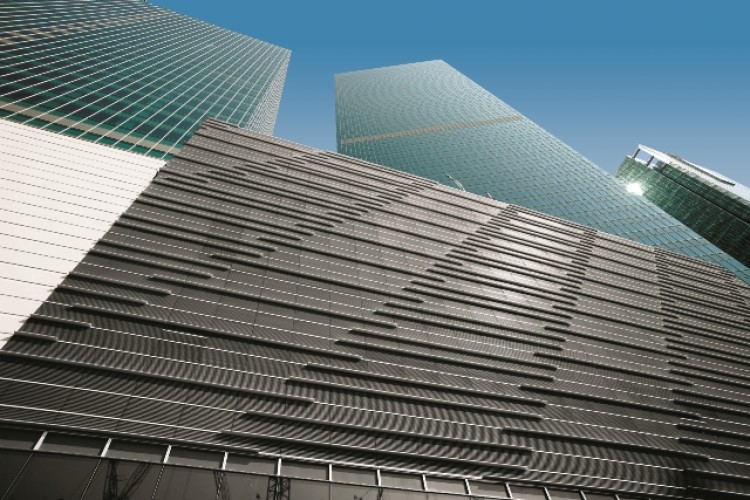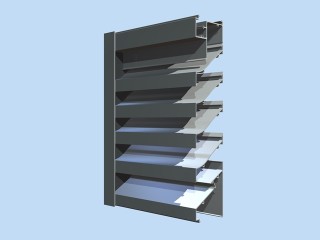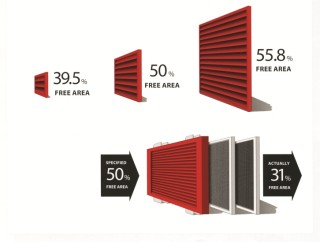Louvre systems play an important role in improving a building’s energy performance. As well as allowing natural ventilation, they can improve air flow to building systems, so less power is needed to move the volumes of air needed. This can mean, for example, that a smaller and less powerful HVAC system can be specified.
Specifying a louvre is a compromise between air flow and water ingress. Poor specification can lead to rainwater ingress, not enough ventilation, wasted energy and poor performance, not only of the equipment being ventilated but of the building as a whole.
Traditionally, louvres are specified based on free area (typically 50%), calculated by measuring the clear distance between the blades and multiplying it by the width of the louvre panel (or height, if the blades are arranged vertically). However, as louvre design has changed in response to demand for better water protection, performance characteristics have also changed, exposing the limitations of specifying louvres purely on free area.
Free area is clearly dictated by the size of the louvre. Industry commonly uses a 1m by 1m louvre when quoting free area but, in reality, louvres are never precisely this size. In fact, the smaller the louvre, the lower the proportion of free area, as it is affected by the space taken up by the louvre frame elements (head, cill, jambs and mullions). Free area is also affected by other factors, such as additional structural support, or if bird screens or insect meshes are fitted.
Perhaps most importantly, free area does not take into account how the air flows through a louvre. All louvres restrict the passage of air and this resistance is called the pressure drop. This dictates how much air gets through the louvre and so how much can effectively be used. Too high a pressure drop can cause a rapid temperature rise inside a building, leading to problems with HVAC plant.
As a result, louvre specification needs to move away from free area alone and consider other factors, including site location and weather conditions (including wind direction). These should then be balanced with the required air flow, the maximum acceptable pressure drop, the degree and depth of acceptable water penetration and finally, the building’s exterior design, which can dictate where louvres can be placed and how they fit into the aesthetics.
Performance criteria should not be compromised by aesthetics. Louvres can be hidden away but this can increase resistance to air flow.

Screening louvres are suitable where water penetration will not cause significant problems and economy is the primary consideration, such as screening of rooftop plant or in a multi-storey car park. These louvres typically have simple blade shapes, allowing good airflow but giving limited defence against rain.
Standard drainable blades give good airflow and some rain defence but do not perform so well with wind-driven rain. They are used when occasional ingress is not a major concern and where some drainage of cascading water is required.
Storm-resistant, or performance, louvres, typically provide moderate-to-good airflow with excellent defence against wind-driven rain. These are used when high levels of ventilation and maximum rain protection are needed for sensitive equipment such as HVAC plant.
Performance louvres’ blades have complex profiles and use the “tangential separation effect” to force air entering the louvre to change direction rapidly. The complex blade profile creates low vortex turbulence with areas of low and high pressure. As the turbulence gives water droplets greater momentum, the droplets are thrown out into the areas of low pressure and drain away.
Louvre technology has moved forward. So should specification habits.
About the author: Simon Hunters is product manager of louvres at Construction Specialties.
Got a story? Email news@theconstructionindex.co.uk





